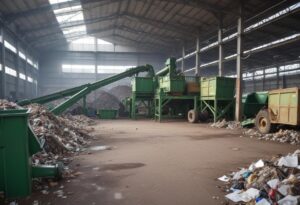Disaster Management in India: A Call for Sustainable Practices
India, a land of diverse landscapes and rich cultural heritage, is also a nation frequently grappling with natural disasters. Floods, cyclones, droughts, earthquakes, and landslides pose a constant threat to lives, livelihoods, and infrastructure. While traditional reactive approaches have focused on post-disaster relief, a paradigm shift towards sustainable disaster management practices is crucial for building long-term resilience.
The Landscape of Disasters in India
India’s vast geographical expanse exposes it to a multitude of natural hazards:
Floods: Recurring monsoons often lead to devastating floods, particularly in the Indo-Gangetic plains and coastal regions. The 2013 Uttarakhand floods and the 2015 Chennai floods are stark reminders of the immense damage these events can cause.
Cyclones: The Bay of Bengal and the Arabian Sea are breeding grounds for cyclones that batter the eastern and western coasts of India, causing widespread destruction and loss of life. The 1999 Odisha cyclone and the 2013 Phailin cyclone are prime examples.
Droughts: Erratic monsoon patterns and rising temperatures contribute to frequent droughts across large parts of India, particularly in the central and western regions. These droughts cripple agricultural production and threaten food security.
Earthquakes: The Himalayan belt is a seismically active zone, making India vulnerable to earthquakes. The 2001 Gujarat earthquake and the 2015 Nepal earthquake, with their epicenters near India, highlight the potential devastation.
Landslides: Heavy monsoon rainfall, deforestation, and fragile geological conditions contribute to landslides in mountainous regions of the Himalayas and the Western Ghats. These events can cause significant damage to infrastructure and settlements.
The Limitations of Traditional Approaches
Traditionally, disaster management in India has largely focused on post-disaster relief efforts. This reactive approach, while crucial for immediate needs, falls short in building long-term resilience. The limitations include:
High Dependence on Relief: Post-disaster relief measures involve large-scale resource allocation for food, shelter, and medical aid. While essential, this dependence creates a cycle of vulnerability, leaving communities unprepared for future events.
Limited Preparedness: Inadequate investment in pre-disaster preparedness measures like early warning systems, evacuation plans, and public awareness campaigns leaves communities vulnerable when disasters strike.
Unsustainable Practices: Relief efforts often involve temporary shelters and infrastructure reconstruction that may not be resilient to future disasters. Additionally, the large-scale utilization of resources during relief operations can be environmentally unsustainable.
The Call for Sustainable Practices
Building long-term resilience and reducing disaster vulnerability requires a shift towards sustainable disaster management practices. This approach focuses on:
Risk Reduction: Identifying and mitigating disaster risks through proactive measures like land-use planning, building codes compliant with seismic zones, and watershed management for flood control.
Preparedness and Early Warning Systems: Investing in robust early warning systems, conducting regular mock drills, and raising public awareness about disaster preparedness can significantly reduce casualties and damage.
Community-Based Disaster Risk Management (CBDRM):
Empowering local communities through training, capacity building, and involving them in decision-making processes for disaster preparedness and response is crucial for effective long-term risk reduction.
Sustainable Reconstruction: Rebuilding infrastructure and housing using local, sustainable materials and adhering to disaster-resistant construction principles ensures long-term resilience of communities.
Integration with Climate Change Adaptation: Since climate change amplifies the frequency and intensity of natural disasters, disaster management strategies must be integrated with climate change adaptation plans for comprehensive risk reduction.
Examples of Sustainable Practices in India
Several initiatives in India demonstrate the effectiveness of sustainable disaster management practices:
Early Warning Systems: The Indian Meteorological Department (IMD) has established a robust network of weather stations and early warning systems for cyclones, floods, and heat waves. This has led to a significant decrease in cyclone-related casualties in recent years.
Community-Based Disaster Risk Management (CBDRM): Initiatives led by NGOs and government agencies train local communities in disaster preparedness, including first-aid training, search and rescue techniques, and stockpile management. This empowers communities to respond effectively during disasters.
Building Back Better: Following the 2013 Uttarakhand floods, reconstruction efforts focused on using disaster-resistant construction materials and techniques, making communities more resilient to future floods.
Challenges and Considerations
Implementing sustainable disaster management practices in India faces several challenges:
Funding: Shifting from reactive relief to proactive risk reduction requires sustained funding for infrastructure development, capacity building, and technological advancements.
Capacity Building: Building the capacity of local communities and government agencies to implement and manage sustainable disaster risk reduction strategies requires dedicated training programs and resource allocation.
- Fur-Ever Friends Boutique: Tail-Wagging Treasures
- Critter Comforts and Beyond: Exploring the Expansive World of Pet Shops
- Paws, Claws, and Beyond: Navigating the Vast Realm of Pet Store Wonders




